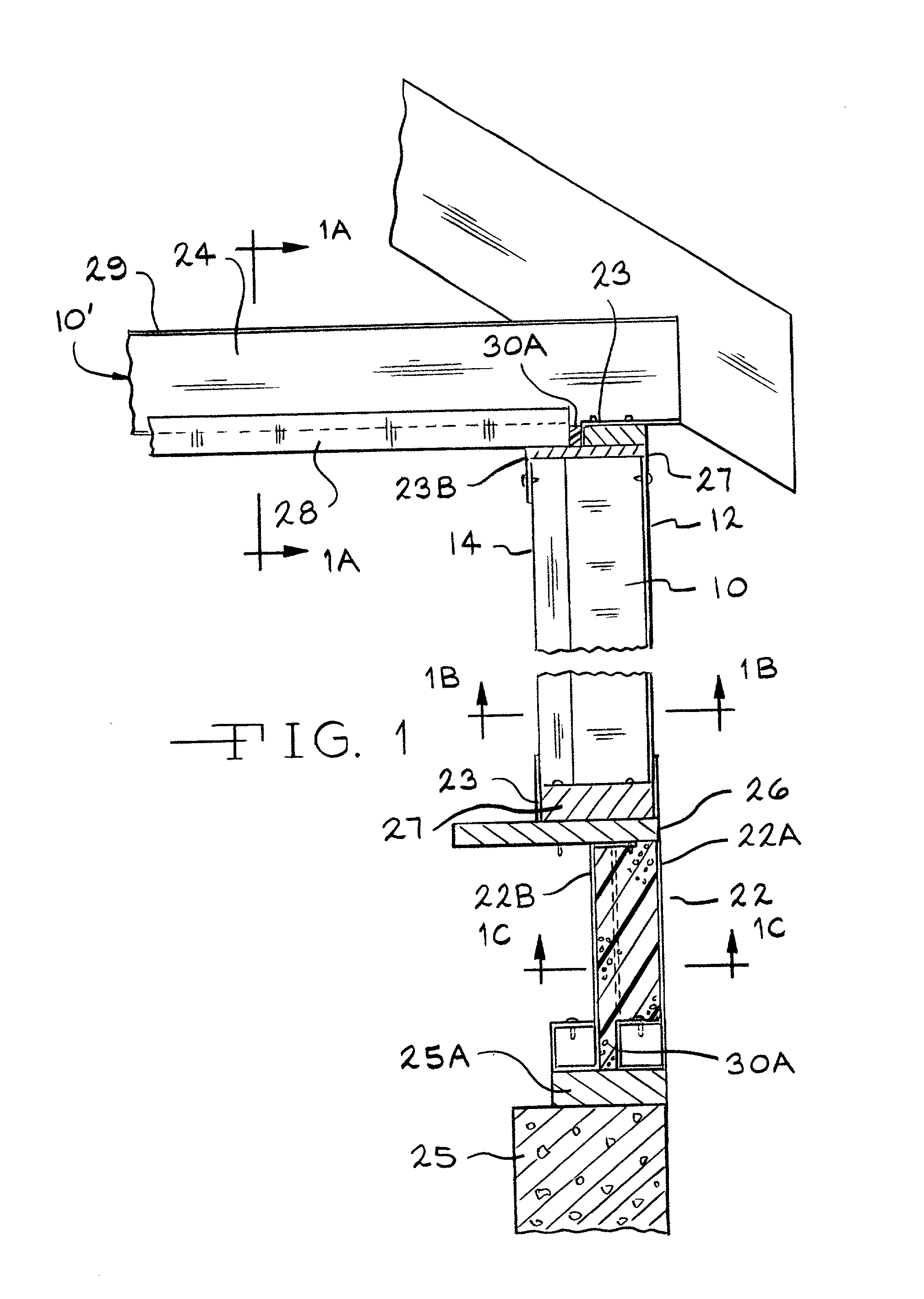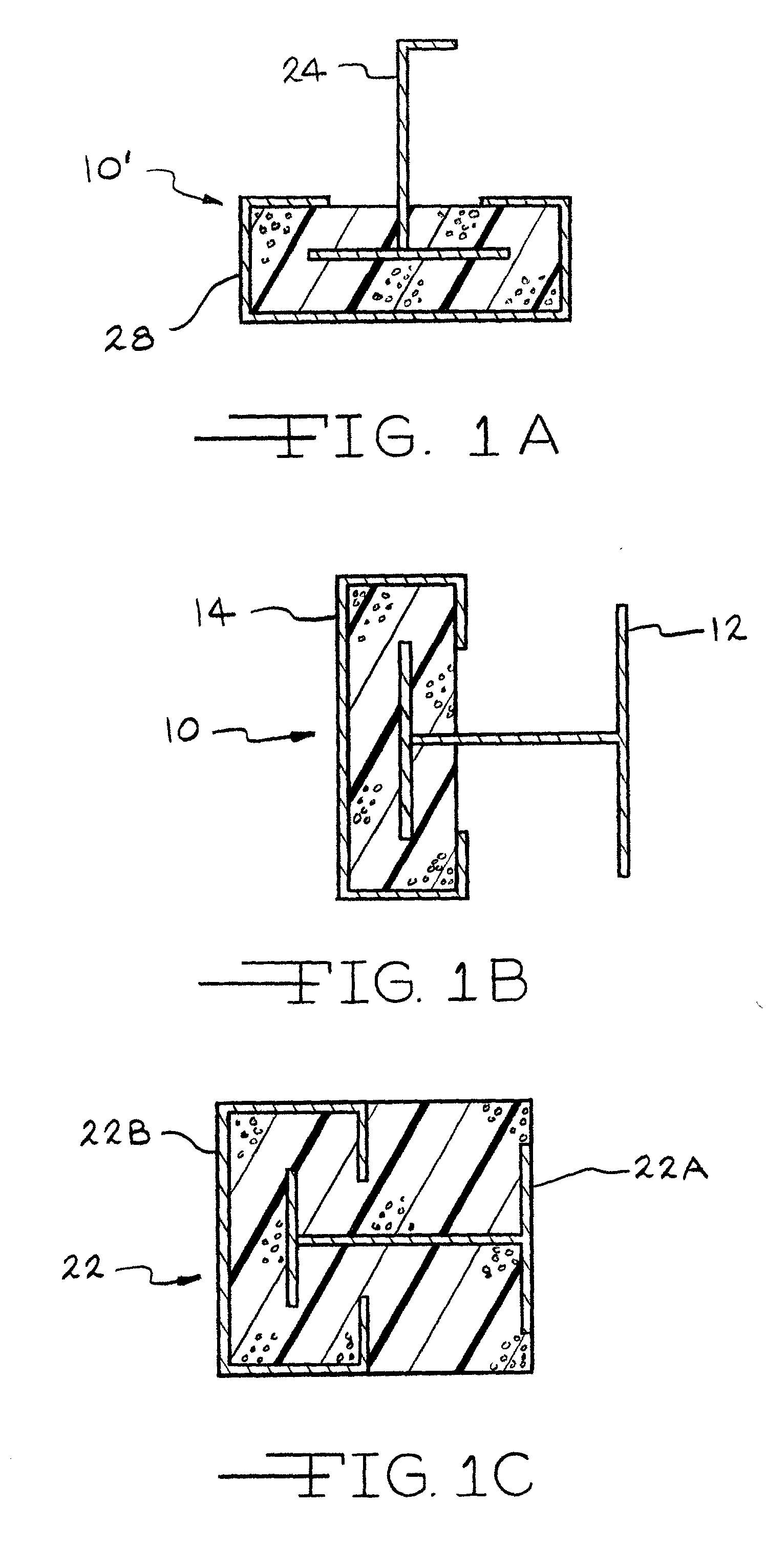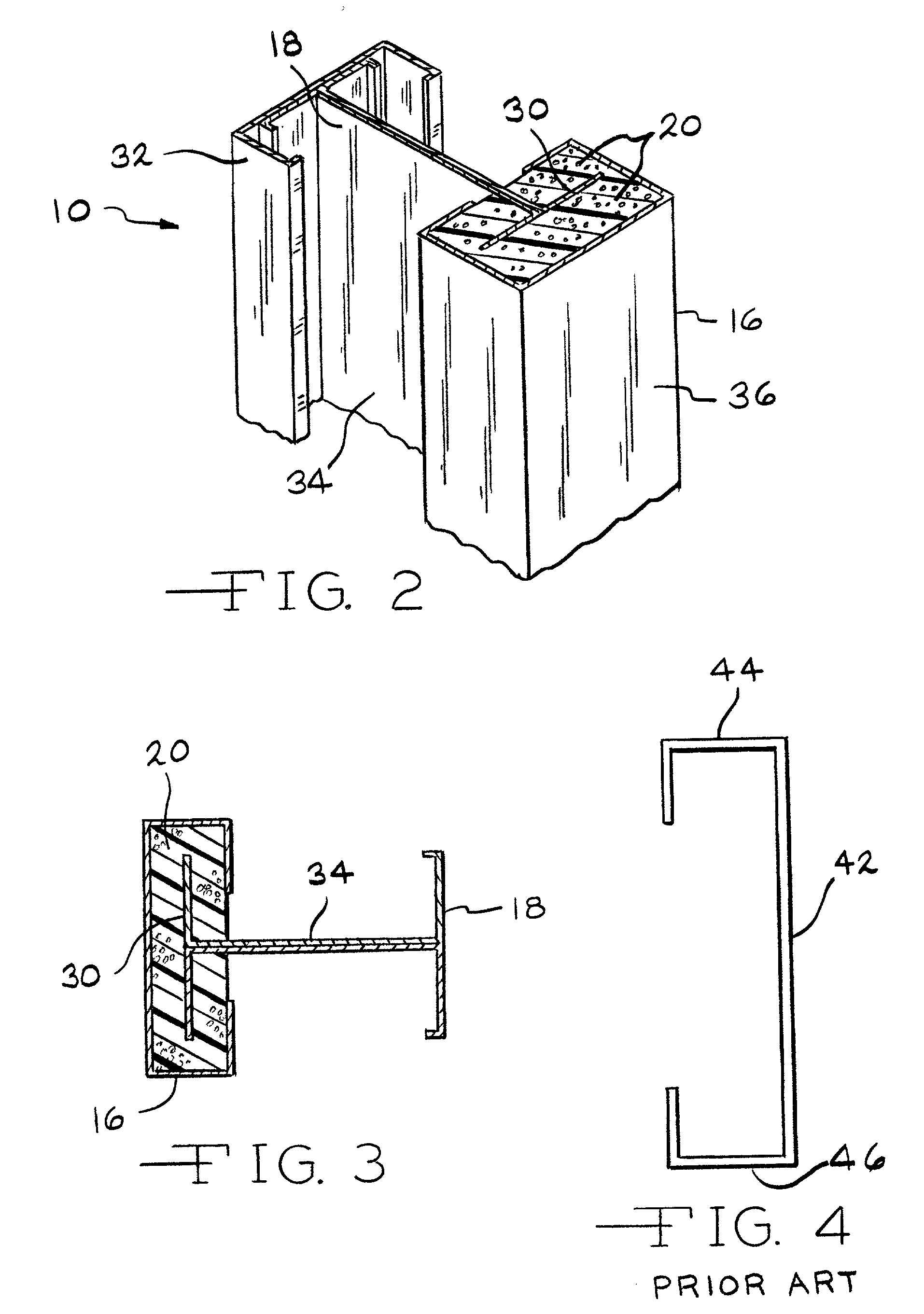Acoustical composite steel member
a composite steel and acoustic technology, applied in the direction of girders, walls, joists, etc., can solve the problems of thermal efficiency, new setbacks in residential steel frame buildings, and material cost of steel framing comparable to that of wood, and achieve excellent acoustic or sound dampening properties and improve acoustic properties
- Summary
- Abstract
- Description
- Claims
- Application Information
AI Technical Summary
Benefits of technology
Problems solved by technology
Method used
Image
Examples
Embodiment Construction
[0017] The composite of this invention can have excellent acoustical or sound dampening properties depending on the selection of the insulating material. Steel studs are generally better than wood studs because they have less mass connecting the inner and outer walls and therefore have less sound transmission. The composite stud of this invention has acoustical properties better than steel or metal studs because of the isolation between the inner and outer frames. The thermal break eliminates any direct metal connections thereby interrupting the path noise energy would follow. Generally, the transmission loss (TL) through a give wall design is a weighted average of all the sound paths through the composite parts of the wall. ASTM has a rating system for comparing wall designs called "sound transmission class" (STC). The STC rating for a double sided gypsum board wall using wood 2 by 4 construction would be in the range of STC=30-36. The same wall using 4" steel studs would be STC-39...
PUM
| Property | Measurement | Unit |
|---|---|---|
| thickness | aaaaa | aaaaa |
| thickness | aaaaa | aaaaa |
| density | aaaaa | aaaaa |
Abstract
Description
Claims
Application Information
 Login to View More
Login to View More - R&D
- Intellectual Property
- Life Sciences
- Materials
- Tech Scout
- Unparalleled Data Quality
- Higher Quality Content
- 60% Fewer Hallucinations
Browse by: Latest US Patents, China's latest patents, Technical Efficacy Thesaurus, Application Domain, Technology Topic, Popular Technical Reports.
© 2025 PatSnap. All rights reserved.Legal|Privacy policy|Modern Slavery Act Transparency Statement|Sitemap|About US| Contact US: help@patsnap.com



